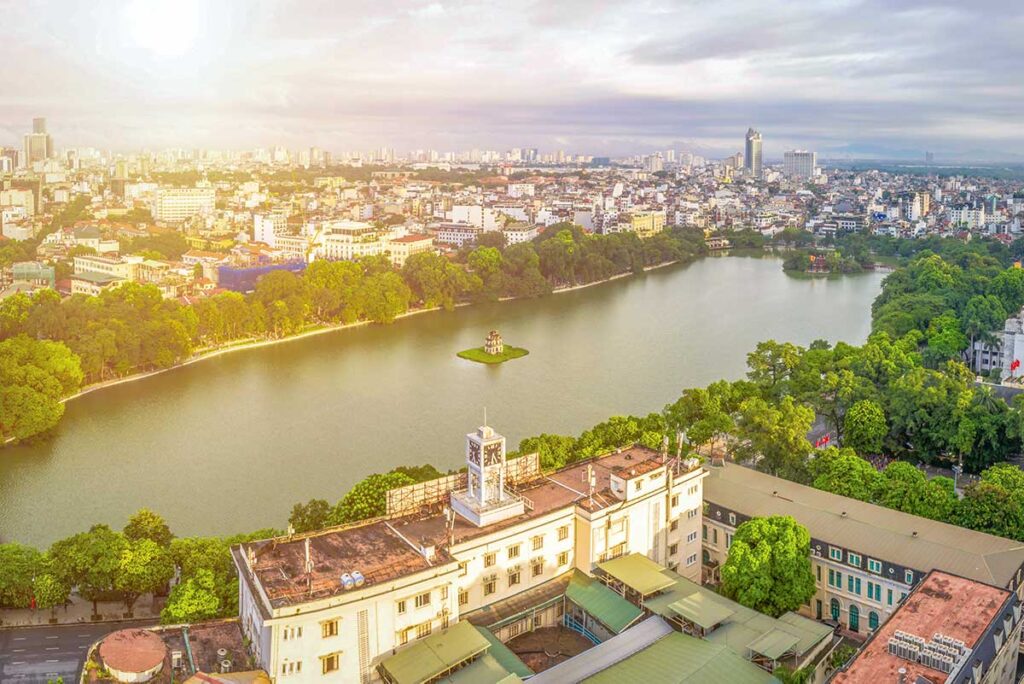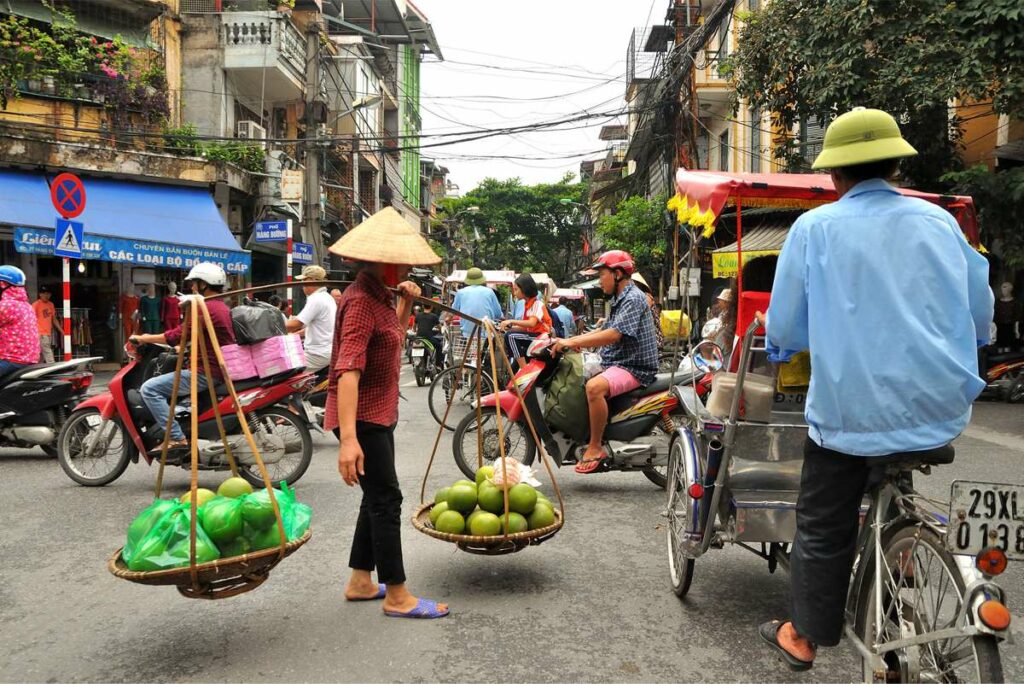What is Hoan Kiem District?
In Vietnam, cities are divided into administrative units called districts (quận), and each district is made up of smaller wards (phường). Hoan Kiem District is one of the most central and important districts in Hanoi — both historically and for tourism. It includes the famous Old Quarter in the north and the more spacious French Quarter in the south, with Hoan Kiem Lake as its geographic and symbolic center.
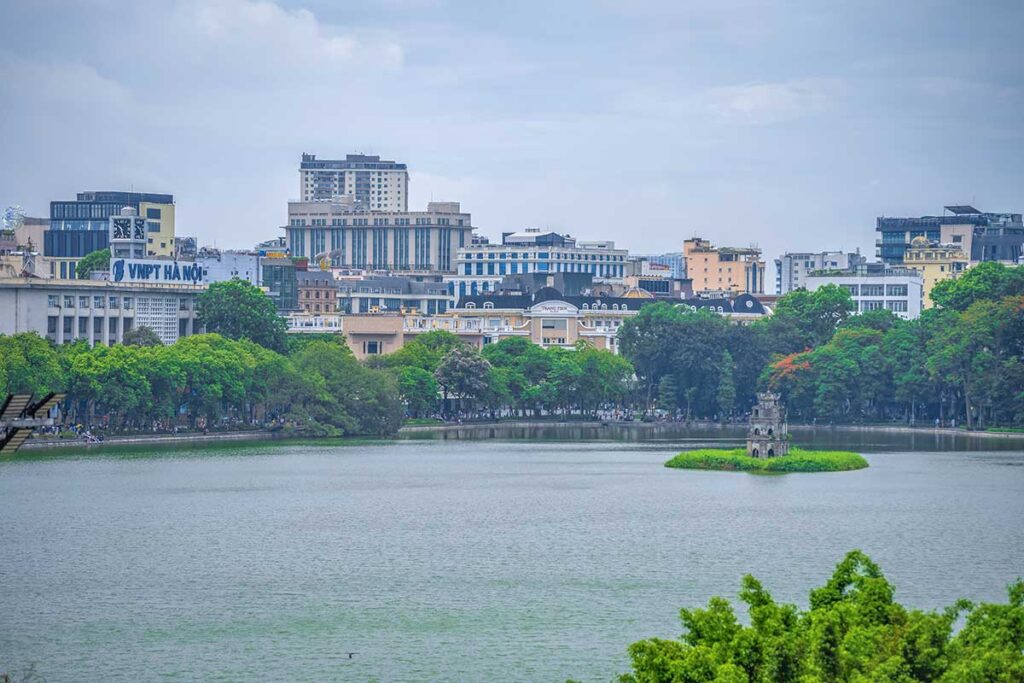
If you’re staying in the Old Quarter, you’ll likely need to select Hoan Kiem District as your arrival location when filling out your e-visa form. This area is where most travelers base themselves, thanks to its walkable streets, street food, markets, and proximity to many of Hanoi’s top sights.
History of Hoan Kiem District
Hoan Kiem District has been the political and commercial core of Hanoi for centuries. During the Ly and Tran dynasties, the area around Hoan Kiem Lake was already an important cultural and spiritual center. By the 15th century, local legend gave the lake its name — “Lake of the Returned Sword” — linking it forever to Vietnam’s national identity.
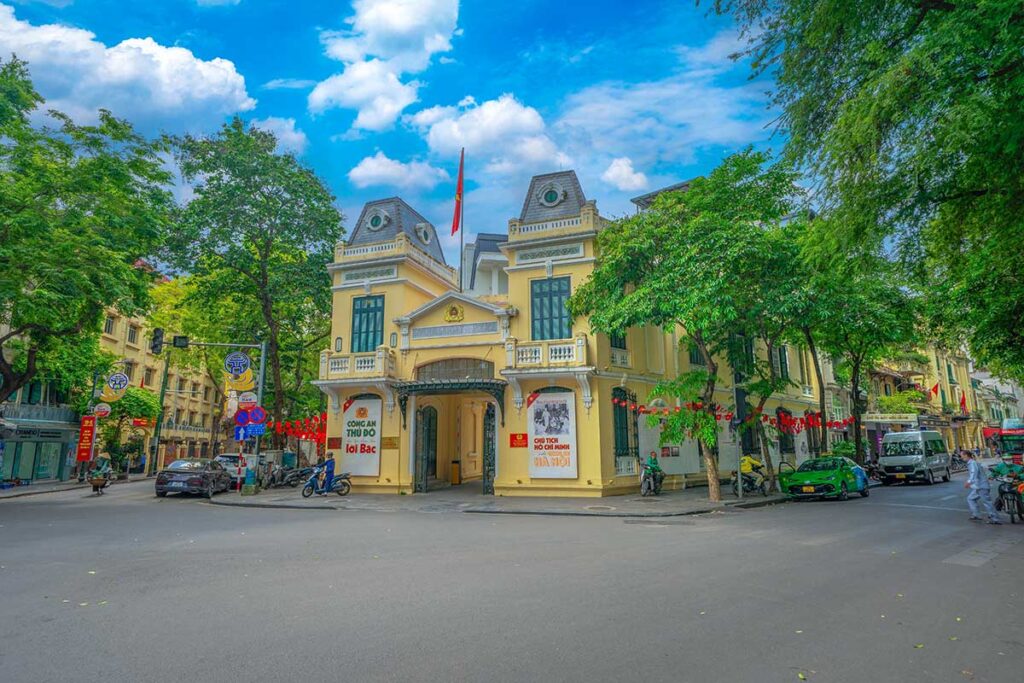
Under French colonial rule in the late 19th and early 20th centuries, the district was transformed. The French built wide boulevards, grand villas, and government buildings in the southern part of the district — now known as the French Quarter. Meanwhile, the northern half remained the dense, traditional Old Quarter, with its 36 guild streets and local markets. Today, this contrast still defines Hoan Kiem: a district where ancient temples sit just blocks away from colonial architecture and modern shops.
Biggest highlights of Hoan Kiem District
From centuries-old guild streets to French colonial landmarks and lively street life, Hoan Kiem District is packed with memorable experiences. These ten highlights are easy to visit on foot or in short rides — ideal for building into your Hanoi itinerary.
1. Discover the Old Quarter
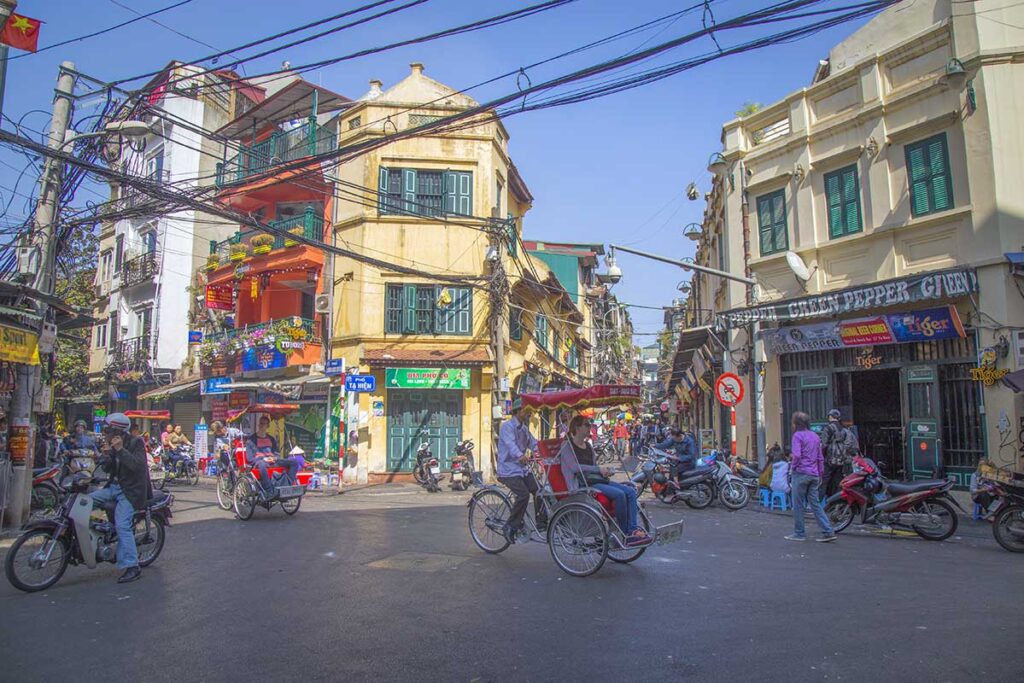
The Old Quarter is Hanoi’s most iconic neighborhood — a maze of narrow streets where traditional trades, colonial architecture, and daily local life all collide. You’ll see everything from herbal medicine shops and fabric stalls to sidewalk barbers and steaming pots of street food.
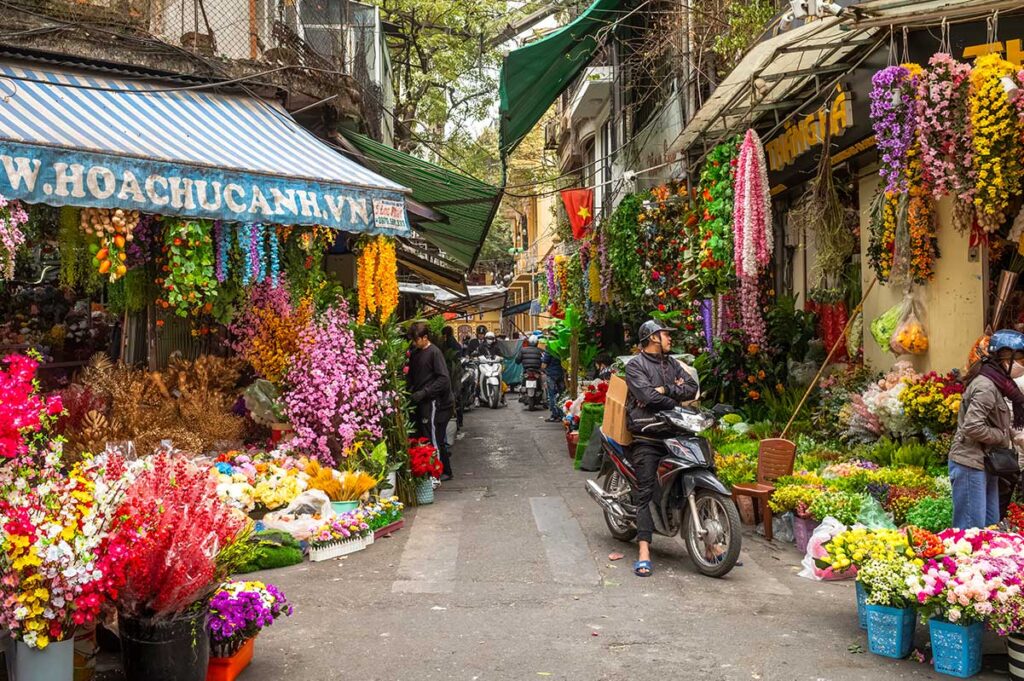
It’s one of the best places in the city to walk aimlessly. Every turn might lead to a small temple, a hidden courtyard, or a cafe with just two plastic chairs and a view of pure chaos. The charm is in the details — and in the mix of noise, color, and culture that defines modern Hanoi.
Want to know which streets to explore, where the hidden temples are, and which museums to visit?
Check our full Old Quarter guide →
Pro tip: A street food tour is a great way to start, especially if you’re unfamiliar with Vietnamese dishes or unsure where it’s safe to eat. But the real charm of the Old Quarter is wandering freely, turning down side alleys, and stepping inside a temple or traditional house you didn’t expect.
2. Walk around Hoan Kiem Lake
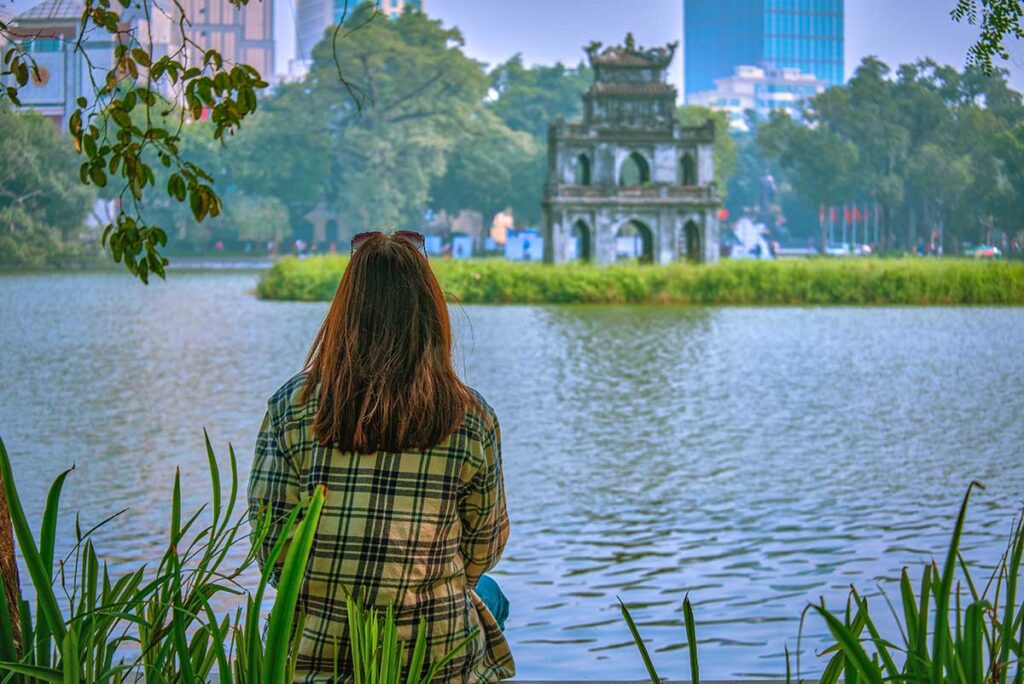
Hoan Kiem Lake is the symbolic heart of Hanoi and its Hoan Kiem Disitrict — both geographically and spiritually. Locals walk laps around it at sunrise, couples gather at sunset, and the weekends turn it into a pedestrian-only social hub.
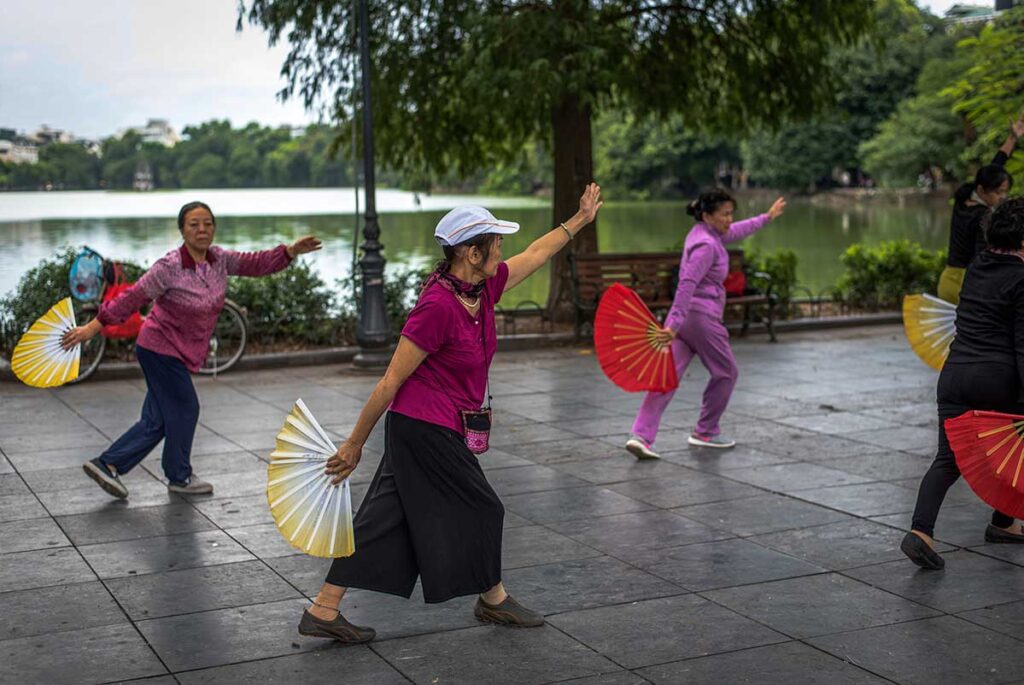
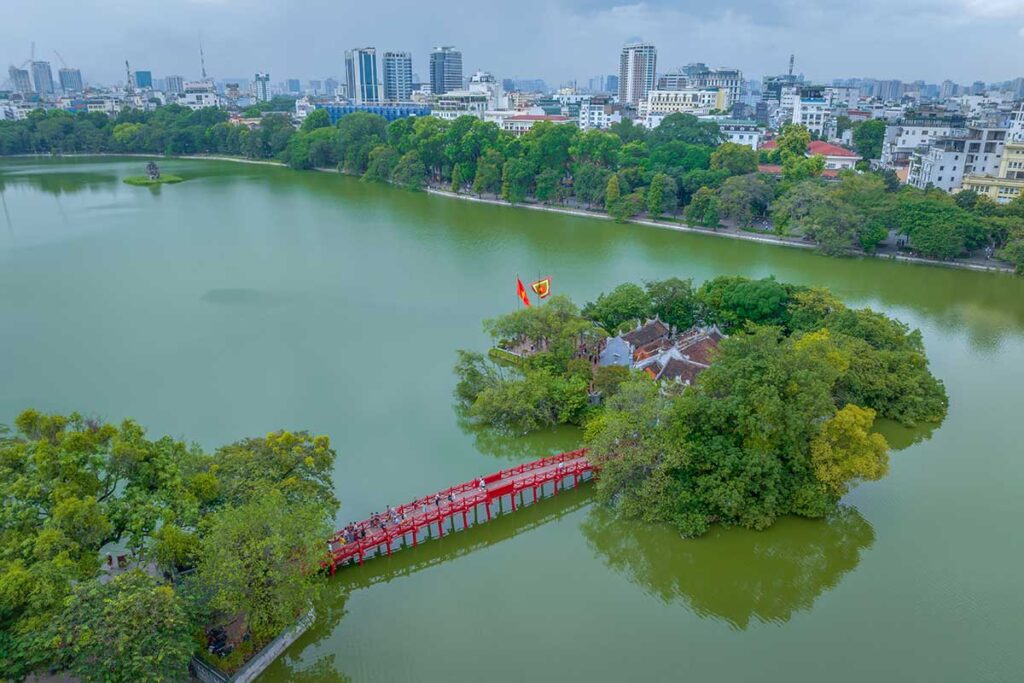
The lake walk is short (about 1.5 km), flat, and shaded. Highlights include Ngoc Son Temple, The Huc Bridge, and the Turtle Tower — but don’t miss the scenes of daily life: students practicing guitar, uncles playing chess, and kids learning to rollerblade. It’s one of the easiest ways to soak up local life with minimal effort.
3. Sip Lemon Tea at St. Joseph’s Cathedral
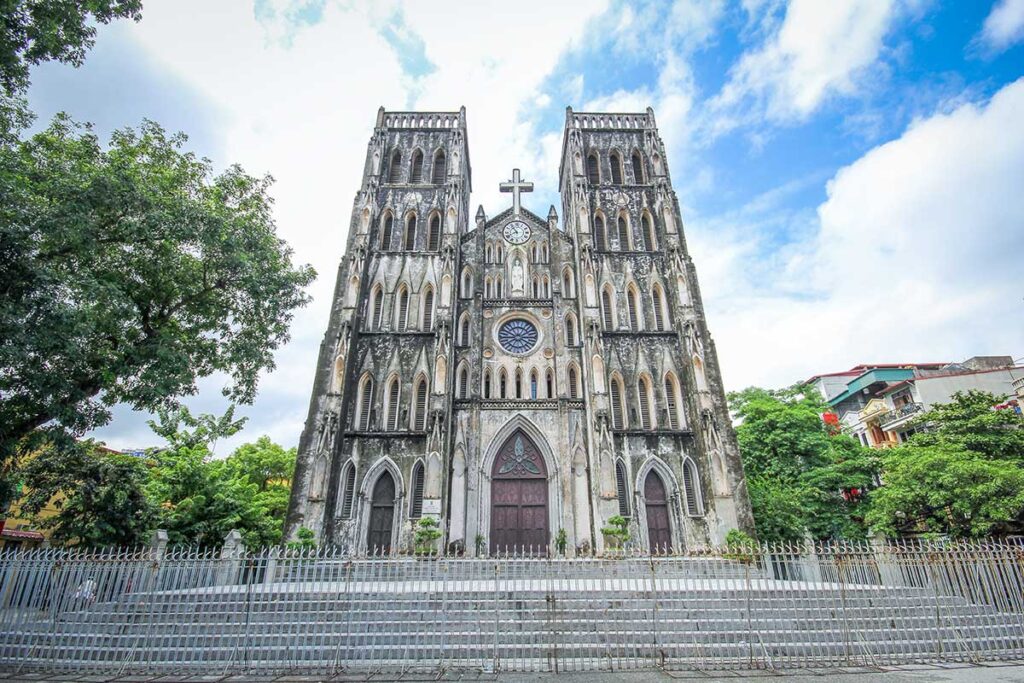
St. Joseph’s Cathedral is one of the most atmospheric landmark in Hoan Kiem Disitrict , and its faded stone towers have made it a favorite photo stop. But what makes it really special is the square in front, where locals — especially students — gather in the evenings to chat over lemon tea (trà chanh) and snacks.
There’s no fancy seating — just tiny plastic stools on the pavement. But the vibe is authentic, social, and peaceful. Come at dusk to enjoy the mix of golden light, cathedral glow, and quiet buzz of conversation.
4. Shop and wander Through Dong Xuan Market
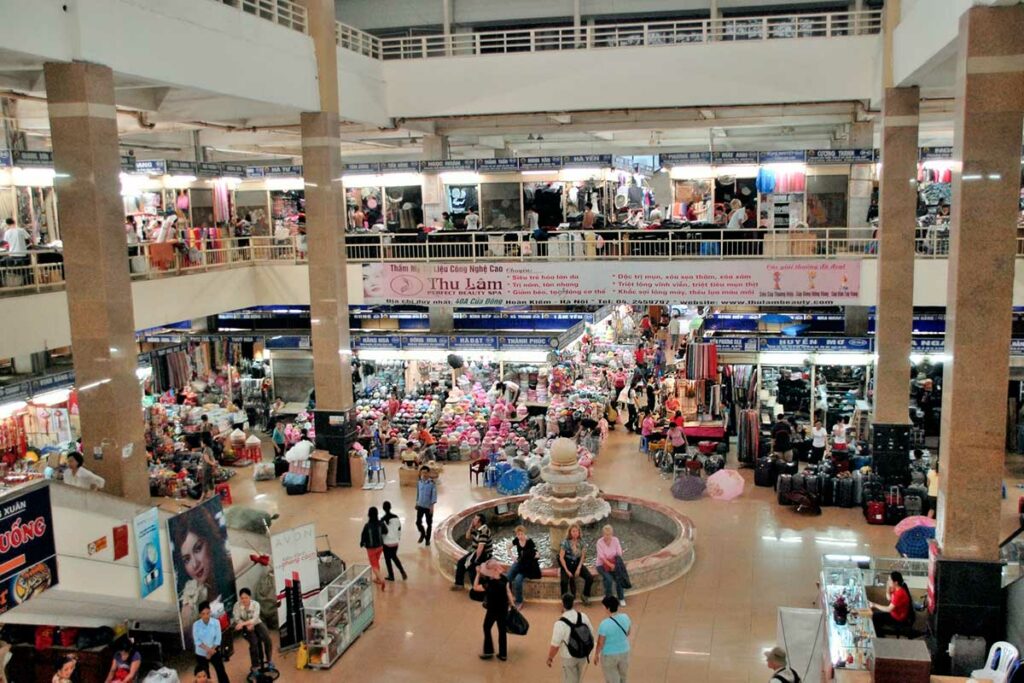
Dong Xuan Market is Hanoi’s largest indoor market and still feels like the chaotic center of local trade. While the main floor sells clothes, bags, and souvenirs, the deeper you go, the more local it becomes — from food stalls in the back to wholesale goods upstairs.
It’s not tourist-oriented, which is exactly why it’s interesting. Come early (before 10:00) to beat the heat and crowds, and walk a few blocks down Hang Khoai or Cau Dong Street afterward to explore the fringe stalls and side alleys.
5. Walk the boulevards of the French Quarter
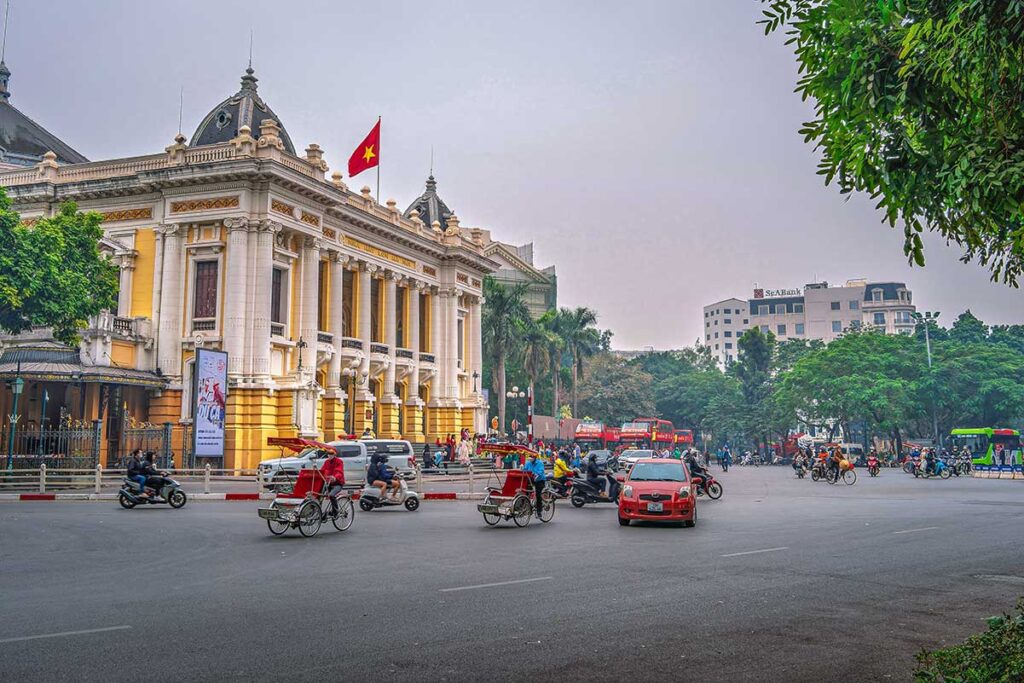
Just south of Hoan Kiem Lake, the French Quarter is quieter, cleaner, and more elegant — a major contrast to the northern Old Quarter. Grand buildings like the Hanoi Opera House and the State Guest House stand beside tree-lined streets, luxury shops, and rooftop cafés.
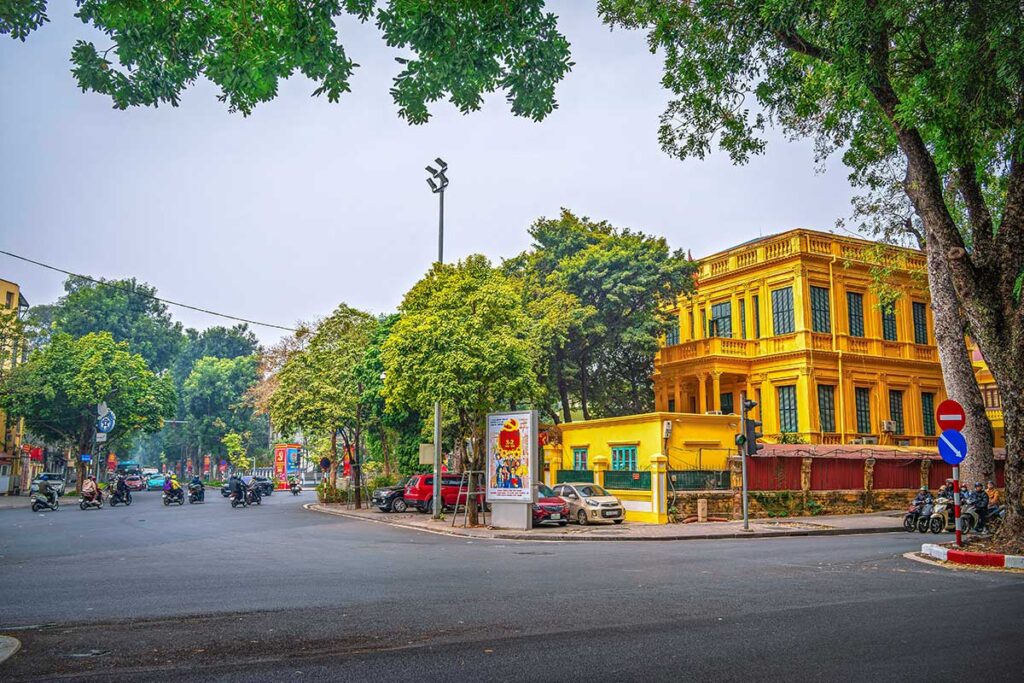
It’s a good area to explore on foot or by cyclo (bicycle rickshaw). The main roads — Trang Tien, Ly Thuong Kiet, Ngo Quyen — are especially nice in the late afternoon when the sun hits the yellow facades. This is also a great place to take a break from the chaos without leaving the city center.
6. Watch the sunrise at Long Bien Bridge

Long Bien Bridge marks the northern edge of Hoan Kiem District and offers one of the most unique early-morning experiences in Hanoi. Built in the early 1900s by the French, this rusted steel bridge stretches across the Red River and is still used by trains, motorbikes, and pedestrians.
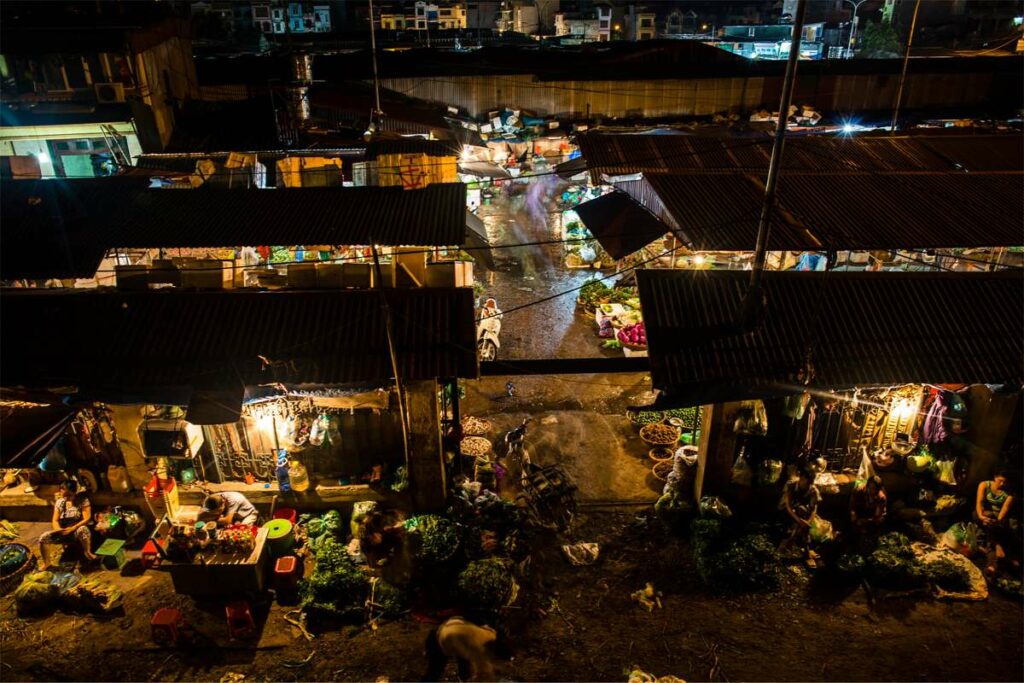
Come around 5:30–6:00 am to catch the soft sunrise light over the water. Below the bridge, you’ll find Long Bien Market coming to life — a wholesale fruit and vegetable hub that serves much of Hanoi. It’s not touristy, but it gives a raw look into the city’s working rhythm before the day begins.
7. Learn about the colonial past at Hoa Lo Prison Museum
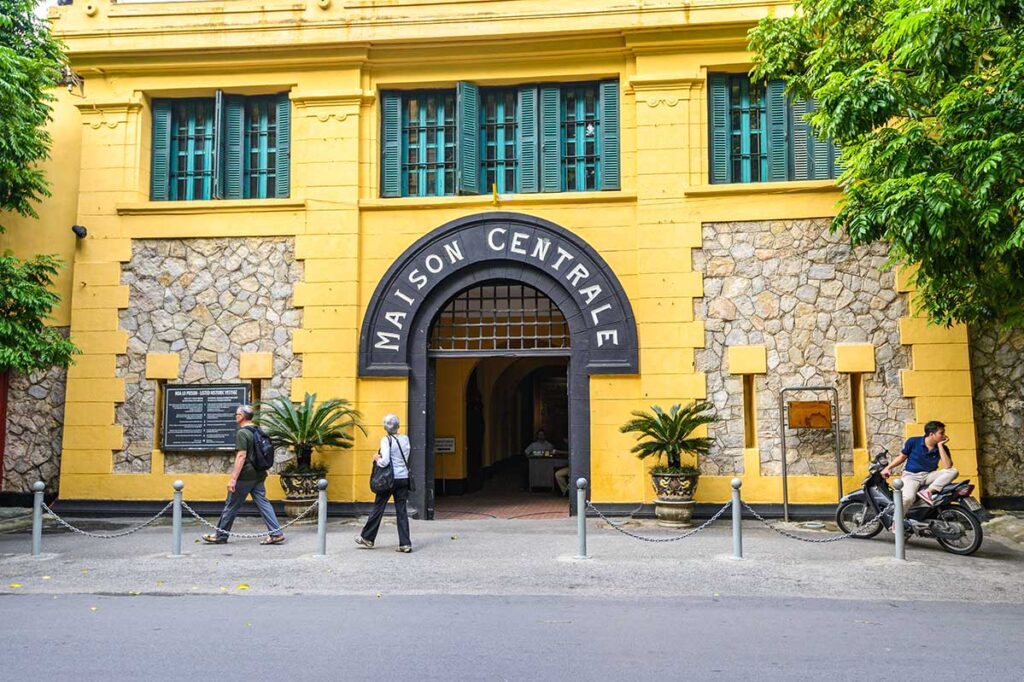
Hoa Lo Prison, located in the southern part of Hoan Kiem District, was originally built by the French to hold Vietnamese political prisoners and later used during the Vietnam War to detain American POWs — earning the ironic nickname “Hanoi Hilton.”
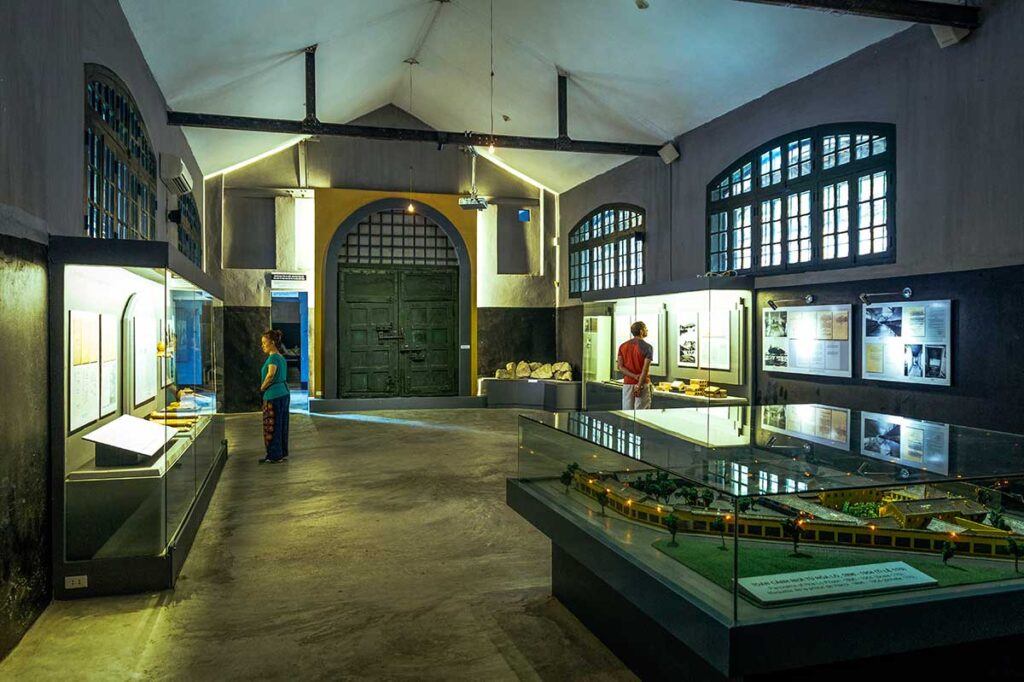
The museum is compact but intense, with preserved cells, historical photos, and personal stories. It’s a powerful stop for travelers interested in Vietnam’s complex past, and it only takes 45–60 minutes to visit. Audio guides are available and worth using for context.
8. Watch a Water Puppet Show at Thang Long Theater
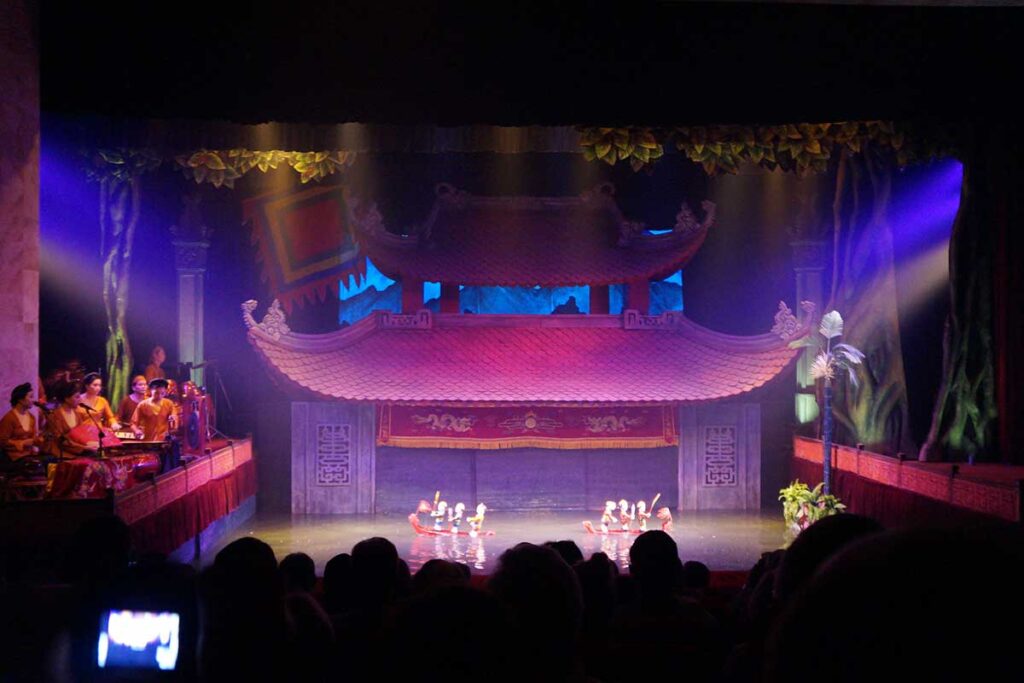
Water puppetry is a uniquely Vietnamese art form, and Thang Long Water Puppet Theater in Hoan Kiem District is the best place to see it. Performances use wooden puppets operated over water to tell traditional folk tales and legends, with live music and narration.
Shows last about 50 minutes and are easy to follow even without Vietnamese. Book your tickets in advance (especially on weekends), and try to get a center-row seat for the clearest view.
9. Drink a coffee at Hanoi Train Street
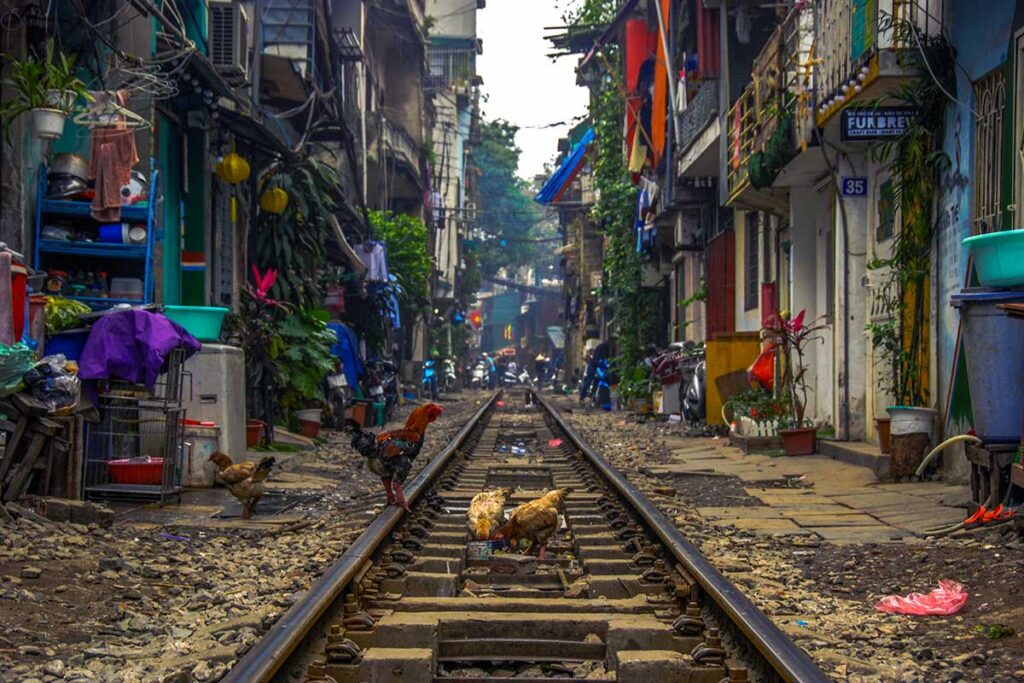
Train Street, where a railway track runs straight through a narrow residential lane, is one of the most photographed spots in Hoan Kiem District. Cafes along the track serve coffee just inches from where the train passes — though it’s not always open.

Access rules change frequently due to safety concerns, and closures often affect the most central section. As of now, it’s best to go with a local guide or visit the accessible stretch near Tran Phu Street, where trains still pass and a few safe cafes remain open.
10. Dive deeper in museums
Hoan Kiem District has several museums worth visiting, especially if you’re interested in Vietnam beyond the usual war history. These museums are easy to reach on foot and offer a quiet break from the streets outside.
Vietnam National Museum of History
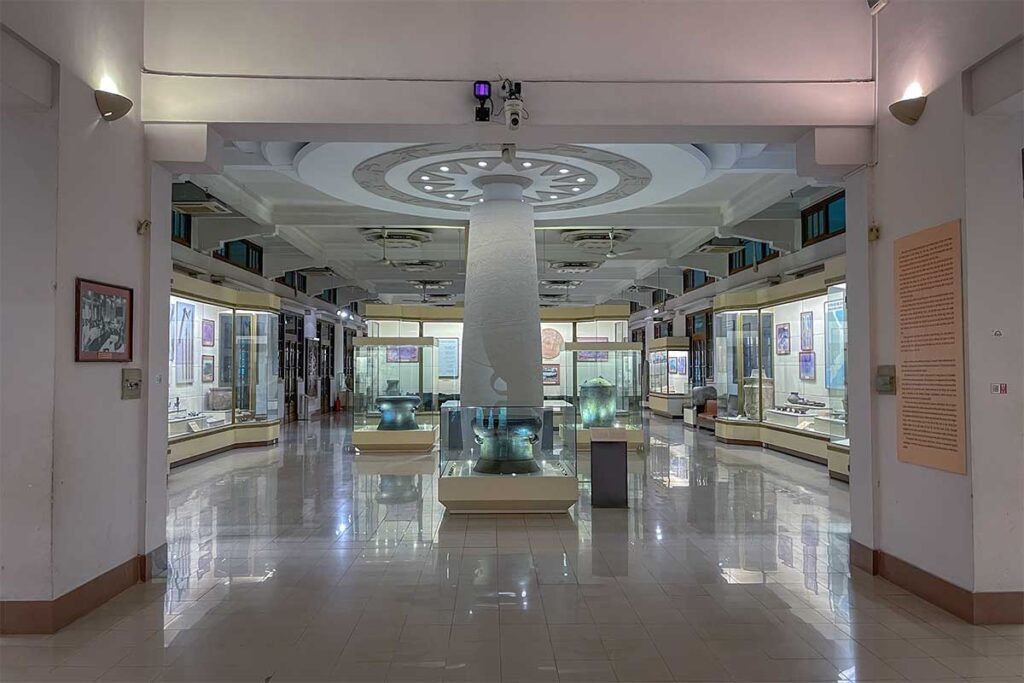
Vietnam National Museum of History is set in a beautiful colonial building, this museum focuses on Vietnam’s ancient history — from prehistoric tools to the last royal dynasties. It’s well-labeled and especially interesting if you want to understand the country’s deeper historical layers.
Vietnamese Women’s Museum
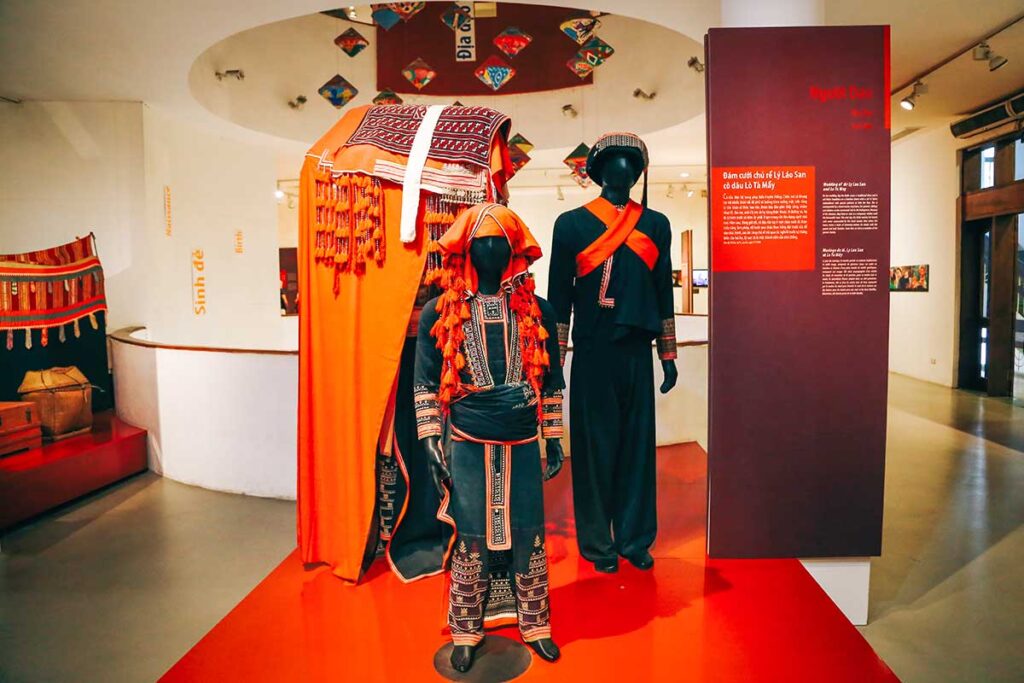
The Vietnamese Women’s Museum, a thoughtfully curated museum explores the lives, roles, and contributions of women in Vietnam — from ethnic traditions to wartime resilience. It’s not large, but highly rated by travelers, and often a surprising highlight.
How to get to Hoan Kiem District
Since Hoan Kiem District is Hanoi’s central hub, getting here is usually simple—whether you’re arriving from the airport, train station, or another city. Most visitors end up here first, especially if staying near Hoan Kiem Lake or the Old Quarter.
From the airport
Noi Bai International Airport is about 30 km from Hoan Kiem District. The fastest options are a taxi or private airport transfer (45–60 minutes). The Airport Bus No. 86 is a reliable budget choice, with stops in the Old Quarter and near the lake.
Read our full guide to getting from Noi Bai Airport to Hanoi City Center
By train
Hanoi Railway Station (Ga Ha Noi) is just west of Hoan Kiem District, around 1.5 km from the lake. From there, it’s a short Grab ride or even walkable if you’re staying nearby.
By bus
Most long-distance buses arrive at stations outside the city center, such as My Dinh, Giap Bat, or Nuoc Ngam. These are 7–10 km from Hoan Kiem District. However, many limousine vans from popular tourist areas (like Sapa or Ninh Binh) will drop you off directly in the Old Quarter.
How to get around Hoan Kiem District
Hoan Kiem District is compact and easy to explore, especially compared to other parts of Hanoi. Walking is often the best way to take in the atmosphere, but you’ll also find plenty of transport options when your feet need a break.
Walking
This is by far the best way to explore Hoan Kiem District, especially the Old Quarter, French Quarter, and areas around the lake. Streets are narrow, traffic is slow, and there’s something to see on nearly every corner. Plan flexible walking loops that link key highlights — like St. Joseph’s Cathedral, Dong Xuan Market, and the lakefront.
Taxis and Grab
For longer distances, late-night returns, or luggage-heavy trips, Grab or regular taxis are cheap and convenient. Be aware that on weekends, large parts of the Old Quarter become pedestrian-only zones, so your driver might have to drop you a few blocks away.
Cyclo Ride (Xích Lô)
These three-wheeled bicycle taxis aren’t used by locals anymore, but they remain a popular tourist experience. Drivers usually offer short scenic loops around Hoan Kiem Lake or deeper rides into the Old Quarter. Agree on a price before you get in — and enjoy the slow pace. For tips and prices, read our guide about cyclo rides in Hanoi.
Where to stay in Hoan Kiem District
Hoan Kiem District offers the best location for first-time visitors to Hanoi — with most sights, food, and transport options within walking distance. Choosing the right part of the district depends on your travel style and budget.
Old Quarter
The Old Quarter is Hanoi at its most vibrant: dense, energetic, and full of character. It offers the widest range of accommodations — from backpacker hostels and guesthouses to stylish boutique hotels and luxury stays tucked into the historic streets. You’ll be steps away from street food, night markets, cafés, and nightlife. It’s lively and walkable, but can feel intense if you’re sensitive to noise or crowds.
French Quarter
The French Quarter offers a calmer, more elegant atmosphere with wide tree-lined streets and colonial architecture. Hotels here tend to be more upscale, with grand facades and modern comforts. It’s ideal if you want quieter evenings, café culture, and proximity to major sights like the Opera House or Hoa Lo Prison — without the street noise of the Old Quarter.
Alternatives to Hoan Kiem
If you’ve already stayed in Hoan Kiem or prefer a quieter, more residential vibe, Tay Ho (West Lake) is a good alternative. This area is popular with expats, has scenic lakeside cafés, and a growing selection of boutique hotels. But it’s farther from Hanoi’s historic core — expect to use taxis or Grab for most sightseeing.
